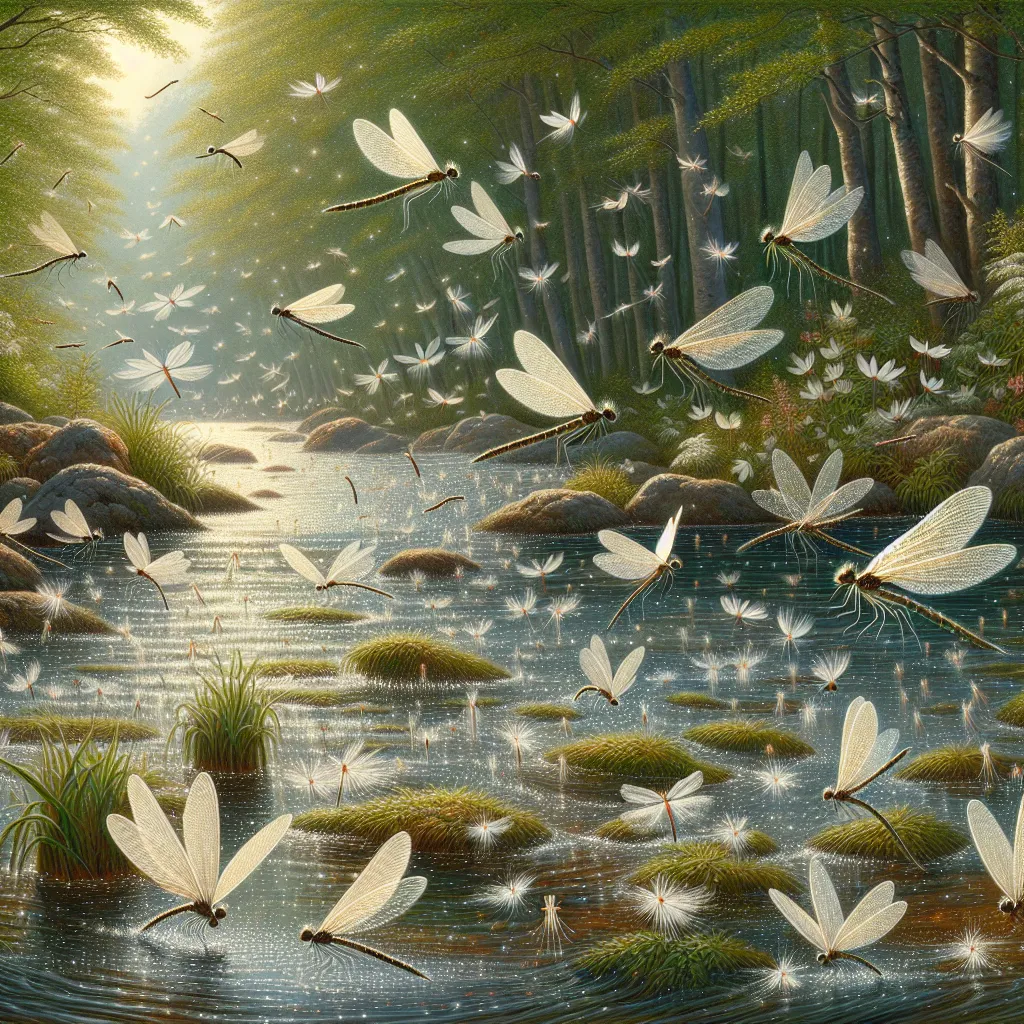Mayflies, around 4,000 species strong, take to the skies each year in a fascinating reproductive dance. These massive swarms happen above nearly every type of freshwater on the planet, excluding Antarctica and some isolated islands. Whether the species are large Hexagenia limbata or tiny Paracloeodes minutus, their airborne adulthood is shockingly brief—often just one day or, for some, only minutes.
Contrary to what one might think, their short lifespan isn’t primarily due to predators, though many fish, birds, and larger insects do fancy them as a snack. Instead, this brevity is an inherent part of their life cycle. Amazingly, adult mayflies have done away with functional mouths and digestive systems. This means they can pack their bodies with more eggs, sometimes up to 12,000, crucial for their survival given that very few will reach adulthood or successfully reproduce.
Male mayflies perform a mesmerizing dance in swarms, with females flying through to find a mate. Interestingly, some all-female populations skip this airborne tango altogether, reproducing via parthenogenesis. Recent research even hints at mayfly populations that can switch between these two reproductive modes. Once the eggs are ready, a female will lay them on or under the water and then die almost immediately.
It might seem tragic, but this process is part of their grand design. The species’ scientific name, Ephemeroptera, hints at their fleeting lives. Yet, fishermen have long suspected otherwise, with scientists only confirming in 1681 that mayflies indeed live longer, just mostly underwater.
Mayfly eggs hatch when conditions are perfect, which can take months, or happen even quicker. Once hatched, mayflies dive into an underwater nymph stage. Here, in rivers, streams, ponds, lakes, and clean fresh water, they live out most of their lives, feeding and growing for nearly a year, sometimes even two.
Their survival tactics are diverse. Sprawlers flatten themselves to withstand currents, while clingers use suckers and claws to stay put. Some swim, crawl, or burrow, with burrowers digging U-shaped tunnels using specialized body parts. These nymphs filter food through their burrows by hustling water with their abdominal gills.
When they finally morph into adults, the swarms can become so dense they show up on weather radars. Mayflies play crucial roles in their ecosystems. They’re a key food source for freshwater fish and are excellent indicators of water quality since they’re sensitive to pollution. Scientists often gauge the health of a body of water based on the presence of mayfly species.
So, next time you see a cloud of mayflies swirling above a pond or stream, think of the invisible, thriving aquatic world below. Their brief aerial ballet signifies a vibrant, healthy ecosystem beneath the surface.






